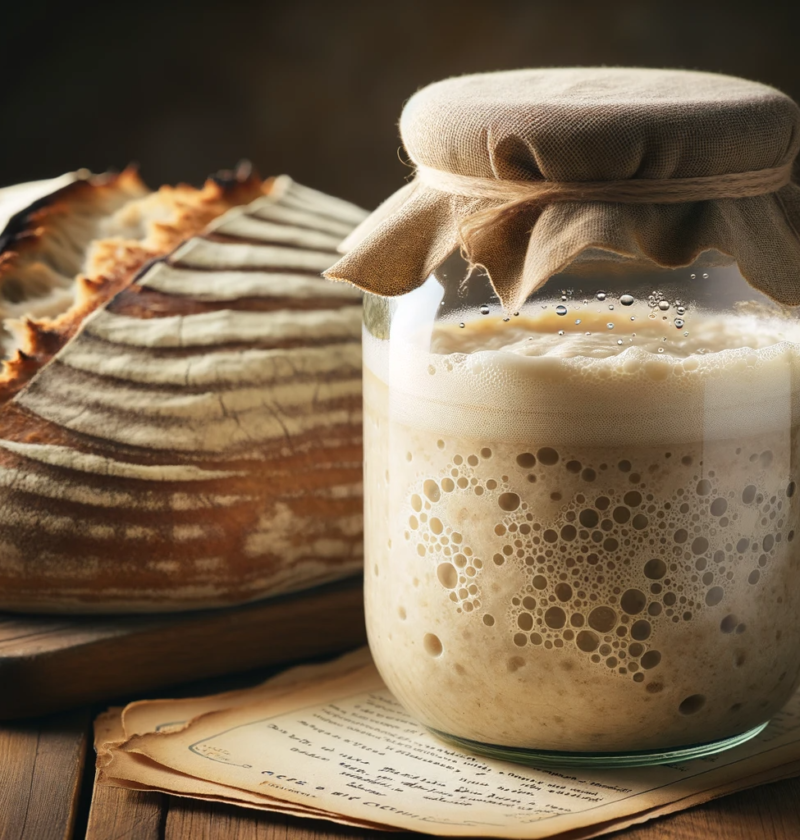From the rustic tables of ancient Egyptian bakers to the modern artisanal bakeries, sourdough bread, known for its characteristic tangy flavor, chewy texture, and crisp, crackly crust, has been a cherished staple. This beloved bread, however, isn’t a modern marvel but a testament to the time-honored traditions passed down through generations. Let’s embark on a journey through time to uncover the rich history of sourdough bread and how it became the sensation it is today.
The Ancient Roots
The history of sourdough is as old as the history of agriculture and civilization. Around 6000 years ago, humans began to cultivate grains, and it wasn’t long before they discovered that when water was added to these grains, they could create a mash that fermented naturally over time. The oldest recorded instance of sourdough preparation dates back to ancient Egypt around 1500 BC. The Egyptians are credited with the intentional use of wild yeast and bacteria to leaven bread, a process discovered by accident when dough was left out, and wild yeast spores from the air initiated the fermentation process.
Sourdough’s Golden Era
Fast forward to the California Gold Rush in the late 1800s, sourdough held an essential place among the miners and settlers. The ‘sourdoughs,’ as the Gold Rush miners were often called, relied on the fermented dough for its resilience, adaptability, and the ease with which it could be made under harsh conditions. It was during this era that the legendary “San Francisco Sourdough” emerged. The unique strains of lactobacillus in the region gave the bread a distinct flavor, one that became synonymous with sourdough and is still sought after today.
Surviving Through Innovation
As industrialization swept the world, the invention of commercial yeast in the late 19th century marked a decline in traditional sourdough production. Commercial yeast allowed for faster, more consistent bread production, catering to the rapidly growing population. However, the two World Wars and the Great Depression that followed saw a resurgence in sourdough as commercial yeast became scarce. Resourceful households returned to cultivating wild yeast starters, a time-tested tradition that helped many families make nutritious, hearty bread.
The Artisanal Resurgence
The late 20th and early 21st centuries have witnessed a profound artisanal renaissance. A newfound appreciation for traditional baking methods and natural ingredients has emerged. Sourdough, in the spotlight, is celebrated for its minimalism, relying solely on flour, water, salt, and the natural yeast and bacteria from its surroundings. More than just ingredients, making sourdough has become an art form, a science, and for many, a passion. The digital age has further amplified its reach, with enthusiasts worldwide sharing recipes, techniques, and stories, thereby preserving the rich, cultural significance of this ancient bread.
Sourdough’s Timeless Legacy
The story of sourdough is a narrative of human civilization. It’s a testament to our ability to harness nature’s gifts, adapting and evolving over thousands of years. Each loaf of sourdough that we bake is not just food; it is a slice of history, a living tradition, and a testament to human ingenuity and resilience.
In a world that constantly races towards the next big thing, sourdough remains a comforting constant, reminding us to appreciate the simple, natural, and time-honored traditions of our ancestors. So, the next time you take a bite of a crunchy, tangy slice of sourdough, remember that you are savoring a 6000-year-old legacy that we continue to carry forward with every new batch we nurture and every loaf we bake.
